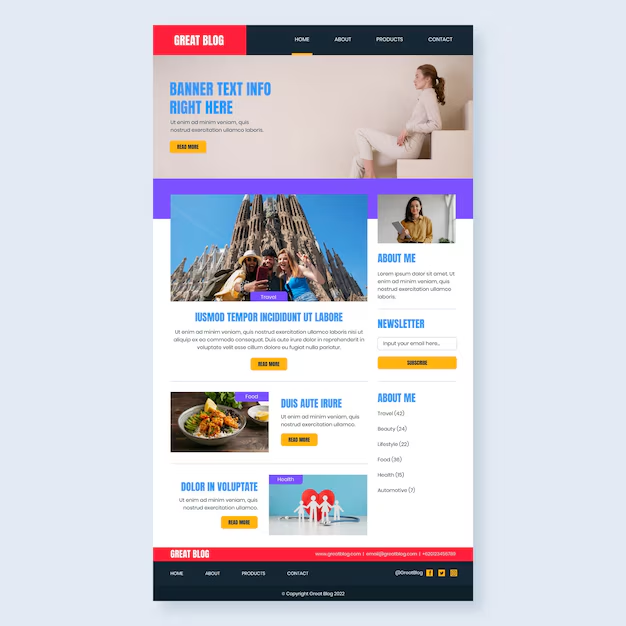In today’s fast-paced digital world, simplicity and efficiency are the cornerstones of effective web design. Single Page Website Design (SPWs) have emerged as a popular choice for businesses, creatives, and organizations aiming to provide seamless user experiences. With their minimalist structure, captivating visuals, and streamlined navigation, single page website designs are redefining how we engage with online content. Let’s dive into what makes these websites unique, why they’re a powerful tool for modern businesses, and how they can elevate your online presence.

What is a Single Page Website?
A single page website, as the name suggests, is a website that consists of only one HTML page. Unlike traditional multi-page websites that link to separate pages, SPWs use scrolling or interactive elements to display all the information on a single page. The goal is to present content in a cohesive and user-friendly manner, enabling visitors to find what they need without navigating through multiple pages.
Benefits of Single Page Website Design
- Enhanced User Experience (UX)
- SPWs offer a straightforward and intuitive browsing experience. Users can access information quickly through scrolling, swiping, or clicking on navigation anchors that guide them to specific sections.
- Faster Loading Times
- With fewer assets and no page-to-page navigation, single page websites load significantly faster than multi-page counterparts. Speed is a critical factor for user retention and SEO rankings.
- Mobile-Friendly Design
- Single page websites are inherently responsive, making them ideal for mobile users. With increasing web traffic coming from mobile devices, having a site that works seamlessly across all screen sizes is essential.
- Clear and Concise Messaging
- SPWs compel you to distill your content into its most essential elements. This clarity helps users quickly grasp your message and improves overall engagement.
- Cost-Effective Development
- Building and maintaining a single page website is often more affordable than a multi-page site. It’s a great option for startups, small businesses, or personal portfolios.
- Improved Conversion Rates
- With all information accessible on one page, SPWs minimize distractions and create a linear user journey, leading to higher conversion rates.
Applications of Single Page Website Design
Single page websites are versatile and can be tailored to various purposes:
- Portfolios: Showcase your creative work, skills, or accomplishments in a visually appealing layout.
- Landing Pages: Highlight a specific product, service, or campaign with a strong call-to-action (CTA).
- Event Websites: Provide details about an event, including schedules, speakers, and registration forms.
- Small Business Websites: Present your services, testimonials, and contact information concisely.
- Startup Websites: Create a buzz around your brand or product launch with a dynamic, single page layout.
Key Elements of an Effective Single Page Website Design
To create a high-performing single page website, consider incorporating these essential elements:
- Hero Section
- The hero section is the first thing visitors see. Use captivating visuals, an engaging headline, and a compelling CTA to grab attention.
- Navigation Menu
- Implement a fixed or sticky navigation menu with anchor links to different sections of the page. This ensures users can easily explore your site.
- Responsive Design
- Prioritize mobile-first design principles to ensure your site looks and functions perfectly on all devices.
- Engaging Content
- Use concise and engaging copy, supported by high-quality visuals, videos, or animations, to tell your story effectively.
- Call-to-Action (CTA)
- Strategically place CTAs throughout the page to guide users toward desired actions, such as signing up, purchasing, or contacting you.
- Social Proof
- Include testimonials, reviews, or case studies to build trust and credibility with your audience.
- Footer with Contact Information
- Provide easy access to your contact details, social media links, and any other relevant information in the footer.
SEO for Single-Page Websites
SEO is crucial for ensuring your single page website ranks well on search engines. Here’s how to optimize it:
- Keyword Optimization
- Identify and use relevant keywords throughout your content, headings, meta descriptions, and image alt tags.
- Metadata
- Craft compelling meta titles and descriptions to improve click-through rates (CTR) from search engine results pages (SERPs).
- Internal Linking
- Use anchor links effectively to create a logical flow of information and improve user navigation.
- Image Optimization
- Compress images and use descriptive alt tags to enhance page speed and accessibility.
- Page Speed
- Optimize your site’s performance by minimizing code, leveraging browser caching, and using content delivery networks (CDNs).
- Schema Markup
- Implement schema markup to provide search engines with structured data about your site, enhancing its visibility in search results.
Examples of Stunning Single Page Websites
- Creative Portfolios: Designers and photographers often use SPWs to display their work in an interactive, visually stunning way.
- Startup Landing Pages: Many startups rely on single page designs to introduce their products, explain their value propositions, and encourage sign-ups.
- Event Pages: One-page designs simplify event promotion, with details like schedules, speaker profiles, and ticketing available in one scrollable view.
Is a Single Page Website Right for You?
While single page websites are ideal for certain use cases, they may not be suitable for every business. If your site requires extensive content, such as blogs or e-commerce platforms with numerous products, a multi-page site might be more appropriate. However, for those seeking a minimalist, user-centric design that delivers impactful results, SPWs are an excellent choice.



